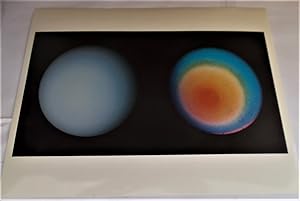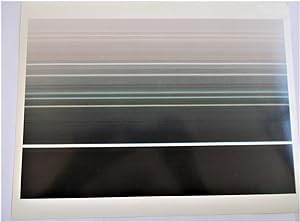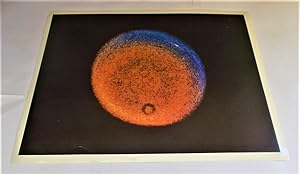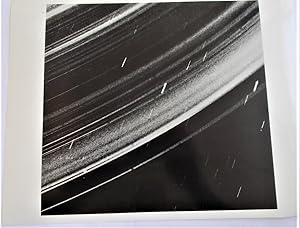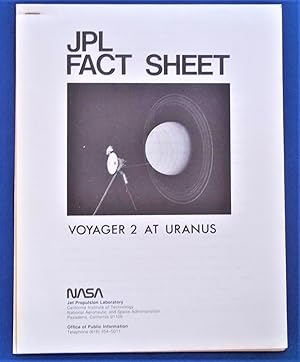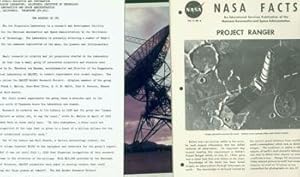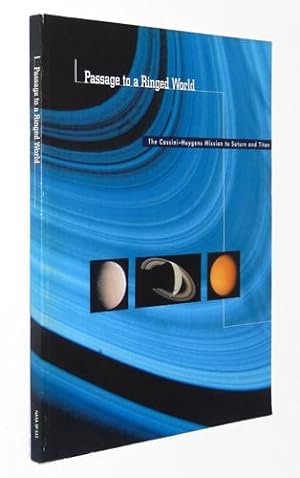national aeronautics space administration jet (31 résultats)
CommentairesFiltres de recherche
Type d'article
- Tous les types de produits
- Livres (21)
- Magazines & Périodiques (Aucun autre résultat ne correspond à ces critères)
- Bandes dessinées (Aucun autre résultat ne correspond à ces critères)
- Partitions de musique (Aucun autre résultat ne correspond à ces critères)
- Art, Affiches et Gravures (Aucun autre résultat ne correspond à ces critères)
- Photographies (9)
- Cartes (Aucun autre résultat ne correspond à ces critères)
- Manuscrits & Papiers anciens (1)
Etat En savoir plus
- Neuf (Aucun autre résultat ne correspond à ces critères)
- Comme neuf, Très bon ou Bon (21)
- Assez bon ou satisfaisant (9)
- Moyen ou mauvais (Aucun autre résultat ne correspond à ces critères)
- Conformément à la description (1)
Reliure
- Toutes
- Couverture rigide (Aucun autre résultat ne correspond à ces critères)
- Couverture souple (26)
Particularités
- Ed. originale (26)
- Signé (Aucun autre résultat ne correspond à ces critères)
- Jaquette (Aucun autre résultat ne correspond à ces critères)
- Avec images (23)
- Sans impressions à la demande (31)
Langue (1)
Livraison gratuite
- Livraison gratuite à destination de France (Aucun autre résultat ne correspond à ces critères)
Pays
Evaluation du vendeur
-
Voyager Bulletin: Mission Status Report No. 72 (November 4, 1985)
Edité par NASA and JPL, Pasadena, CA, 1985
Vendeur : Bloomsbury Books, Las Vegas, NV, Etats-Unis
Edition originale
EUR 13,17
Autre deviseEUR 30,69 expédition depuis Etats-Unis vers FranceQuantité disponible : 1 disponible(s)
Ajouter au panierSoft cover. Etat : As New. First Edition. A left-folded, high-quality newsletter printed on glossy paper, measuring 8-1/2" by 11" and containing four pages including front and rear covers. Topics of this issue: Uranus Encounter Begins: Observatory Phase; Uranus Science Experiments (Imaging and Photopolarimetry). With diagrams. In pristine condition.
-
Voyager Bulletin: Mission Status Report No. 76 (January 26, 1986)
Edité par NASA and JPL, Pasadena, CA, 1986
Vendeur : Bloomsbury Books, Las Vegas, NV, Etats-Unis
Edition originale
EUR 13,17
Autre deviseEUR 30,69 expédition depuis Etats-Unis vers FranceQuantité disponible : 1 disponible(s)
Ajouter au panierSoft cover. Etat : As New. First Edition. This issue contains a single glossy sheet measuring 8-1/2" by 11" printed on both sides. With front cover headline "Miranda!" (with photograph and description of Uranus' innermost large moon); two photographs of "Several moons newly discovered by Voyager 2"; and photograph and description of Oberon. In pristine condition.
-
Voyager Bulletin: Mission Status Report No. 70 (August 20, 1985)
Edité par NASA and JPL, Pasadena, CA, 1985
Vendeur : Bloomsbury Books, Las Vegas, NV, Etats-Unis
Edition originale
EUR 13,17
Autre deviseEUR 30,69 expédition depuis Etats-Unis vers FranceQuantité disponible : 1 disponible(s)
Ajouter au panierSoft cover. Etat : As New. First Edition. This issue contains a single glossy sheet measuring 8-1/2" by 11" printed on both sides. The topic of this issue is Uranus Science Objectives. With a computer-generated drawing of Voyager 2's path through the Uranian system on the front side, and a drawing showing the Seasons on Uranus to the front side. In pristine condition.
-
Voyager Bulletin: Mission Status Report No. 74 (January 13, 1986)
Edité par NASA and JPL, Pasadena, CA, 1986
Vendeur : Bloomsbury Books, Las Vegas, NV, Etats-Unis
Edition originale
EUR 13,17
Autre deviseEUR 30,69 expédition depuis Etats-Unis vers FranceQuantité disponible : 1 disponible(s)
Ajouter au panierSoft cover. Etat : As New. First Edition. This issue contains a single glossy sheet measuring 8-1/2" by 11" printed on both sides. Topics in this issue: A Sixth Moon Discovered; Uranus Science Experiments - Planetary Radio Astronomy; and Plasma Waves. With a Voyager 2 photograph of Uranus, "the first picture to show clear evidence of latitudinal banding in the planet's atmosphere." In pristine condition.
-
Voyager Bulletin: Mission Status Report No. 73 (December 4, 1985)
Edité par NASA and JPL, Pasadena, CA, 1985
Vendeur : Bloomsbury Books, Las Vegas, NV, Etats-Unis
Edition originale
EUR 13,17
Autre deviseEUR 30,69 expédition depuis Etats-Unis vers FranceQuantité disponible : 1 disponible(s)
Ajouter au panierSoft cover. Etat : As New. First Edition. A left-folded, high-quality newsletter printed on glossy paper, measuring 8-1/2" by 11" and containing four pages including front and rear covers. Topics of this issue: Early Results (which begins: "Fifty-two days from its meeting with Voyager 2, a pipsqueak upstart of a robot from a distant planet called Earth, Uranus continues to swathe itself in secrecy"); Magnetosphere Puzzle; Observatory Phase Continues; Infrared Interferometry and Radiometry. With computer summation of six images returned on November 28, 1985 of Uranus' epsilon ring. In pristine condition.
-
Voyager Bulletin: Mission Status Report No. 69 (June 20, 1985)
Edité par NASA and JPL, Pasadena, CA, 1985
Vendeur : Bloomsbury Books, Las Vegas, NV, Etats-Unis
Edition originale
EUR 13,17
Autre deviseEUR 30,69 expédition depuis Etats-Unis vers FranceQuantité disponible : 1 disponible(s)
Ajouter au panierSoft cover. Etat : Near Fine. First Edition. A left-folded, high-quality newsletter printed on glossy paper, measuring 8-1/2" by 11" and containing four pages including front and rear covers. Topics of this issue: Scan Platform Is Healthy; The Onset; Ground Tests; Health Checks; Critical Test Before Uranus; Summary. With a photograph of Voyager's scan platform; diagram of the scan platform; diagram of the actuator problem; and the first clear photograph of the rings of the planet Uranus to the rear cover. Short closed tear to right edge of front cover (to blank margin only), else As New.
-
Voyager Bulletin: Mission Status Report No. 79 (February 12, 1986)
Edité par NASA and JPL, Pasadena, CA, 1986
Vendeur : Bloomsbury Books, Las Vegas, NV, Etats-Unis
Edition originale
EUR 13,17
Autre deviseEUR 30,69 expédition depuis Etats-Unis vers FranceQuantité disponible : 1 disponible(s)
Ajouter au panierSoft cover. Etat : As New. First Edition. This issue contains a single glossy sheet measuring 8-1/2" by 11" printed on both sides. Continues the discussion of Uranus with two topics: The Magnetosphere and The Rings. With a drawing that compares Uranus' rotational axis with Earth, Jupiter, and Saturn (front side); and a photograph of the ring system (to rear side). In pristine condition.
-
Voyager Bulletin: Mission Status Report No. 77 (February 5, 1986)
Edité par NASA and JPL, Pasadena, CA, 1986
Vendeur : Bloomsbury Books, Las Vegas, NV, Etats-Unis
Edition originale
EUR 13,17
Autre deviseEUR 30,69 expédition depuis Etats-Unis vers FranceQuantité disponible : 1 disponible(s)
Ajouter au panierSoft cover. Etat : As New. First Edition. A left-folded, high-quality newsletter printed on glossy paper, measuring 8-1/2" by 11" and containing four pages including front and rear covers. Topics of this issue: Navigation (Navigating by the Stars; Navigating by Radio; Maneuver Design; Support of Science Observations). With large front cover photograph of a portion of the Uranian ring system (the description begins: "Small particles are distributed continuously throughout the Uranian ring system, although most ring particles are larger than 1 meter across. Voyager 2 took this image while in the shadow of Uranus"); rear cover photographs of Titania and Ariel (each with description and discussion). In pristine condition.
-
Voyager Bulletin: Mission Status Report No. 78 (February 10, 1986)
Edité par NASA and JPL, Pasadena, CA, 1986
Vendeur : Bloomsbury Books, Las Vegas, NV, Etats-Unis
Edition originale
EUR 13,17
Autre deviseEUR 30,69 expédition depuis Etats-Unis vers FranceQuantité disponible : 1 disponible(s)
Ajouter au panierSoft cover. Etat : As New. First Edition. This issue contains a single glossy sheet measuring 8-1/2" by 11" printed on both sides. Contains a discussion and review of the Uranus mission and the planet to date beginning with a quotation from Voyager Project Scientist Edward Stone of the California Institute of Technology: "We're happily bewildered. We'd be disappointed if we weren't: if it's not bewildering, you haven't learned much!" With a "trio of Voyager 2 images of Uranus" to the front side. In pristine condition.
-
Voyager Bulletin: Mission Status Report No. 71 (October 28, 1985)
Edité par NASA and JPL, Pasadena, CA, 1985
Vendeur : Bloomsbury Books, Las Vegas, NV, Etats-Unis
Edition originale
EUR 13,17
Autre deviseEUR 30,69 expédition depuis Etats-Unis vers FranceQuantité disponible : 1 disponible(s)
Ajouter au panierSoft cover. Etat : As New. First Edition. This issue contains a single glossy sheet measuring 8-1/2" by 11" printed on both sides. Topics in this issue: Near Encounter Test; Near Encounter Load; Radio Science; Late Stored Updates; Best Lock Frequency; and Results. With a photograph of Uranus and four of its moons taken by Voyager on July 15, 1985. In pristine condition.
-
Voyager Bulletin: Mission Status Report No. 75 (January 22, 1986)
Edité par NASA and JPL, Pasadena, CA, 1986
Vendeur : Bloomsbury Books, Las Vegas, NV, Etats-Unis
Edition originale
EUR 13,17
Autre deviseEUR 30,69 expédition depuis Etats-Unis vers FranceQuantité disponible : 1 disponible(s)
Ajouter au panierSoft cover. Etat : As New. First Edition. This issue contains a single glossy sheet measuring 8-1/2" by 11" printed on both sides. Topics in this issue: Many Moons (with a "family portrait" compilation of photographs of Uranus' five largest moons); Engineering Update; Deep Space Network. In pristine condition.
-
Voyager 1 Encounters Saturn; JPL 400-100
Edité par California Institute of Technology, Jet Propulsion Laboratory, Pasadena, CA, 1980
Vendeur : Ground Zero Books, Ltd., Silver Spring, MD, Etats-Unis
Edition originale
EUR 26,34
Autre deviseEUR 25,57 expédition depuis Etats-Unis vers FranceQuantité disponible : 3 disponible(s)
Ajouter au panierWraps. Etat : Very good. Presumed First Edition, First printing. Quarto. 40 pages. Wraps. Profusely illustrated in color. Slight wear to cover and edges. The pictures assembled in this publication are a part of the rich and varied harvest of information returned by Voyager 1 across nearly a billion miles of interplanetary space. These images are of great beauty as well as great scientific interest, serving to remind us of the awesome and breathtaking dimensions of the solar system we inhabit. Voyager is providing intriguing new information which should help us to understand how the Earthâ"and possibly the universeâ"was formed. Already there have been surprises and puzzles that paint a completely new picture of Saturn and its neighborhood, including the discovery of three new moons, startling information about Saturn's rings, and observation of the unexpectedly complex structure of Saturn's atmosphere and that of its largest moon, Titan. It will take years for scientists to assimilate completely the information which is cascading down from Voyager. What more will this marvel of technology have to tell us before it departs the solar system to travel endlessly among the stars? No other generation has had the opportunity or the technology to reach beyond our worldâ"to see, to touch, to hear the forces that shape our universe. In slightly over two decades, man has ingeniously explored five distant planetsâ"and two dozen moons. We have seen their weather and surfaces, landed on some, probed the atmospheres of others, and listened to their radio noises. Under the planetary exploration program of the National Aeronautics and Space Administration, the Voyager Mission, begun in 1972, was designed to explore Jupiter, Saturn, their satellites, rings, magnetic fields, and interplanetary space. Two automated, reprogrammable spacecraft, Voyagers 1 and 2, were launched in late summer of 1977. Their goals: the outer planets. Both spacecraft made astounding discoveries in the Jupiter system in 1979â"a thin ring, a thick ionized sulfur and oxygen torus, an actively volcanic satelliteâ"these were but a few of the treasures yielded by the two Jupiter flybys. Now, Voyager 1 has completed exploration of its final target: the ringed planet Saturn and its enigmatic giant satellite, Titan. True to the generally unpredictable nature of planetary exploration, the treasures of the Saturn system far exceeded all expectations. We learned more about Saturn in one week than in all of recorded history, thanks to one trusty robot no larger than a compact car and to thousands of diligent and imaginative people. Both spacecraft carry an assortment of optical, radiometric, and fields and particles sensing instruments. Taken together, their data present a comprehensive picture of a planetary systemâ"and clues to what is happening, what has happened, and what may happen in our universe. This publication presents the preliminary photographic results of Voyager 1's encounter with Saturn and its major satellites. Voyager 1 transmitted over 17,500 images in its four months of close observations of the system. Many of these images have been combined to produce mosaics and color pictures. Hundreds have yet to be closely examined. The second Voyager spacecraft will begin its close Saturn observations in early June 1981 and make its closest approach to the planet's northern hemisphere on August 25. Then, due to its launch during a period of rare planetary alignment occurring only once every 175 years, Voyager 2 will be able to continue on to a rendezvous with the seventh planet, Uranus, in January 1986, and perhaps even the eighth planet, Neptune, in August 1989. Voyager 1's primary mission is complete. But its usefulness is far from over. As we go about our daily business, Voyager 1 is searching for another frontierâ"the edge of our solar system. In 7 to 15 years, the spacecraft will cross the heliopauseâ"the farthest reaches of our Sun's magnetic field influence. Then, high above our ecliptic plane, Voyager 1 will continue its flight toward the star Alpha Ophiuchus. Eventually, Voyager 1 will be too distant to communicate with Earth and will silently drift in space forever.
-
Ariel - Titania P-29520 / P29522 January 27, 1986 (NASA - JPL Jet Propulation Laboratory - Photo - Voyager Mission)
Edité par NASA (National Aeronautics and Space Administration) - Jet Propulsion Laboratory - California Institute of Technology, Pasadena, CA, 1986
Vendeur : Bloomsbury Books, Las Vegas, NV, Etats-Unis
Photographie Edition originale
EUR 21,95
Autre deviseEUR 30,69 expédition depuis Etats-Unis vers FranceQuantité disponible : 1 disponible(s)
Ajouter au panierPhotograph. Etat : Fine. 1st Edition. Offered is an original photographic print with two images entitled "Ariel/Titania P-29520 / P29522 January 27, 1986" published in February 1986 ("2/86" as printed) by NASA (National Aeronautics and Space Administration) - Jet Propulsion Laboratory - California Institute of Technology - out of Pasadena, California. Measuring 11" by 8-1/2" the reverse side discusses the photographs along with "Voyager Mission Highlights.".
-
Ariel [Uranus] P-29523 January 27, 1986 (NASA - JPL Jet Propulation Laboratory - Photo - Voyager Mission)
Edité par NASA (National Aeronautics and Space Administration) - Jet Propulsion Laboratory - California Institute of Technology, Pasadena, CA, 1986
Vendeur : Bloomsbury Books, Las Vegas, NV, Etats-Unis
Photographie Edition originale
EUR 21,95
Autre deviseEUR 30,69 expédition depuis Etats-Unis vers FranceQuantité disponible : 1 disponible(s)
Ajouter au panierPhotograph. Etat : Fine. 1st Edition. Offered is an original photographic print entitled "Ariel P-29523 January 27, 1986" published in February 1986 ("2/86" as printed) by NASA (National Aeronautics and Space Administration) - Jet Propulsion Laboratory - California Institute of Technology - out of Pasadena, California. Measuring 11" by 8-1/2" the reverse side discusses the photograph along with "Voyager Mission Highlights.".
-
Uranus Montage P-29549 January 29, 1986 (NASA - JPL Jet Propulation Laboratory - Photo - Voyager Mission)
Edité par NASA (National Aeronautics and Space Administration) - Jet Propulsion Laboratory - California Institute of Technology, Pasadena, CA, 1986
Vendeur : Bloomsbury Books, Las Vegas, NV, Etats-Unis
Photographie Edition originale
EUR 21,95
Autre deviseEUR 30,69 expédition depuis Etats-Unis vers FranceQuantité disponible : 1 disponible(s)
Ajouter au panierPhotograph. Etat : Fine. 1st Edition. Offered is an original photographic print entitled "Uranus Montage P-29549 January 29, 1986" published in February 1986 ("2/86" as printed) by NASA (National Aeronautics and Space Administration) - Jet Propulsion Laboratory - California Institute of Technology - out of Pasadena, California. Measuring 8-1/2" by 11" the reverse side discusses the photograph along with "Voyager Mission Highlights.".
-
Miranda [Uranus] P-29541 January 28, 1986 (NASA - JPL Jet Propulation Laboratory - Photo - Voyager Mission)
Edité par NASA (National Aeronautics and Space Administration) - Jet Propulsion Laboratory - California Institute of Technology, Pasadena, CA, 1986
Vendeur : Bloomsbury Books, Las Vegas, NV, Etats-Unis
Photographie Edition originale
EUR 21,95
Autre deviseEUR 30,69 expédition depuis Etats-Unis vers FranceQuantité disponible : 1 disponible(s)
Ajouter au panierPhotograph. Etat : Fine. 1st Edition. Offered is an original photographic print entitled "Miranda P-29541 January 28, 1986" published in February 1986 ("2/86" as printed) by NASA (National Aeronautics and Space Administration) - Jet Propulsion Laboratory - California Institute of Technology - out of Pasadena, California. Measuring 8-1/2" by 11" the reverse side discusses the photograph along with "Voyager Mission Highlights.".
-
Miranda's Terrain [Uranus] P-29515 January 26, 1986 (NASA - JPL Jet Propulation Laboratory - Photo - Voyager Mission)
Edité par NASA (National Aeronautics and Space Administration) - Jet Propulsion Laboratory - California Institute of Technology, Pasadena, CA, 1986
Vendeur : Bloomsbury Books, Las Vegas, NV, Etats-Unis
Photographie Edition originale
EUR 21,95
Autre deviseEUR 30,69 expédition depuis Etats-Unis vers FranceQuantité disponible : 1 disponible(s)
Ajouter au panierPhotograph. Etat : Fine. 1st Edition. Offered is an original photographic print entitled "Miranda's Terrain [Uranus] P-29515 January 26, 1986" published in February 1986 ("2/86" as printed) by NASA (National Aeronautics and Space Administration) - Jet Propulsion Laboratory - California Institute of Technology - out of Pasadena, California. Measuring 8-1/2" by 11" the reverse side discusses the photograph along with "Voyager Mission Highlights.".
-
Uranus: True and False Colors P-29478 January 23, 1986 (NASA - JPL Jet Propulation Laboratory - Photo - Voyager Mission)
Edité par NASA (National Aeronautics and Space Administration) - Jet Propulsion Laboratory - California Institute of Technology, Pasadena, CA, 1986
Vendeur : Bloomsbury Books, Las Vegas, NV, Etats-Unis
Photographie Edition originale
EUR 21,95
Autre deviseEUR 30,69 expédition depuis Etats-Unis vers FranceQuantité disponible : 1 disponible(s)
Ajouter au panierPhotograph. Etat : Fine. 1st Edition. Offered is an original photographic print entitled "Uranus: True and False Colors P-29478 January 23, 1986" published in February 1986 ("2/86" as printed) by NASA (National Aeronautics and Space Administration) - Jet Propulsion Laboratory - California Institute of Technology - out of Pasadena, California. Measuring 11" by 8-1/2" the reverse side discusses the photograph along with "Voyager Mission Highlights.".
-
Uranian Rings P-29498 January 24, 1986 (NASA - JPL Jet Propulation Laboratory - Photo - Voyager Mission)
Edité par NASA (National Aeronautics and Space Administration) - Jet Propulsion Laboratory - California Institute of Technology, Pasadena, CA, 1986
Vendeur : Bloomsbury Books, Las Vegas, NV, Etats-Unis
Photographie Edition originale
EUR 21,95
Autre deviseEUR 30,69 expédition depuis Etats-Unis vers FranceQuantité disponible : 1 disponible(s)
Ajouter au panierPhotograph. Etat : Fine. 1st Edition. Offered is an original photographic print entitled "Uranian Rings P-29498 January 24, 1986" published in February 1986 ("2/86" as printed) by NASA (National Aeronautics and Space Administration) - Jet Propulsion Laboratory - California Institute of Technology - out of Pasadena, California. Measuring 11" by 8-1/2" the reverse side discusses the photograph along with "Voyager Mission Highlights.".
-
Uranian Cloud P-29468 January 22, 1986 (NASA - JPL Jet Propulation Laboratory - Photo - Voyager Mission)
Edité par NASA (National Aeronautics and Space Administration) - Jet Propulsion Laboratory - California Institute of Technology, Pasadena, CA, 1986
Vendeur : Bloomsbury Books, Las Vegas, NV, Etats-Unis
Photographie Edition originale
EUR 21,95
Autre deviseEUR 30,69 expédition depuis Etats-Unis vers FranceQuantité disponible : 1 disponible(s)
Ajouter au panierPhotograph. Etat : Near Fine. 1st Edition. Offered is an original photographic print entitled "Uranian Cloud P-29468 January 22, 1986" published in February 1986 ("2/86" as printed) by NASA (National Aeronautics and Space Administration) - Jet Propulsion Laboratory - California Institute of Technology - out of Pasadena, California. Measuring 11" by 8-1/2" the reverse side discusses the photograph along with "Voyager Mission Highlights." Two light creases to the photograph.
-
Uranian Ring System P-29525 January 27, 1986 (NASA - JPL Jet Propulation Laboratory - Photo - Voyager Mission)
Edité par NASA (National Aeronautics and Space Administration) - Jet Propulsion Laboratory - California Institute of Technology, Pasadena, CA, 1986
Vendeur : Bloomsbury Books, Las Vegas, NV, Etats-Unis
Photographie Edition originale
EUR 21,95
Autre deviseEUR 30,69 expédition depuis Etats-Unis vers FranceQuantité disponible : 1 disponible(s)
Ajouter au panierPhotograph. Etat : Fine. 1st Edition. Offered is an original photographic print entitled "Uranian Ring System P-29525 January 27, 1986" published in February 1986 ("2/86" as printed) by NASA (National Aeronautics and Space Administration) - Jet Propulsion Laboratory - California Institute of Technology - out of Pasadena, California. Measuring 11" by 8-1/2" the reverse side discusses the photograph along with "Voyager Mission Highlights.".
-
JPL Fact Sheet: Voyager 2 At Uranus
Edité par NASA and JPL, Pasadena, CA, 1985
Vendeur : Bloomsbury Books, Las Vegas, NV, Etats-Unis
Edition originale
EUR 21,95
Autre deviseEUR 30,69 expédition depuis Etats-Unis vers FranceQuantité disponible : 1 disponible(s)
Ajouter au panierSoft cover. Etat : Fine. 1st Edition. An upper-left stapled publication in newsletter format dated April 14, 1985, measuring 8-1/2" by 11" and containing seven sheets printed on one side (front cover and six pages of text).
-
NASA Educational Material: NASA Facts, Vol. II, No. 6, Project Ranger. Photograph of Goldstone Tracking Station near Barstow, CA. Ranger C (RA-8) Status Bulletin. Three Stapled NASA Press Releases.
Edité par Pasadena, CA: NASA., 1964
Vendeur : Wittenborn Art Books, San Francisco, CA, Etats-Unis
Manuscrit / Papier ancien
EUR 43,90
Autre deviseEUR 15,34 expédition depuis Etats-Unis vers FranceQuantité disponible : 1 disponible(s)
Ajouter au panierEtat : Good. Folded Document, 12 pp. (Project Ranger); Color Photograph; Two Loose Pages; Three Stapled Documents. 7" x 9", Near Fine. According to a Jet Propulsion Laboratory Gate Pass, this material was given to Vincent McHugh, doing research for Venture Magazine, on 2/25/1965.
-
Diviner Lunar Radiometer Experiment; National Aeronautics and Space Administration Lunar Reconnaissance Orbiter
Edité par National Aeronautics and Space Administration, Jet Propulsion Laboratory, Pasadena, CA, 2009
Vendeur : Ground Zero Books, Ltd., Silver Spring, MD, Etats-Unis
Edition originale
EUR 21,95
Autre deviseEUR 25,57 expédition depuis Etats-Unis vers FranceQuantité disponible : 1 disponible(s)
Ajouter au panierEtat : Very good. Presumed First Edition, First printing. The format is approximately 85 inches by 11 inches. Color illustrations on both sides. Minor wear and soiling noted. The Diviner Lunar Radiometer Experiment is one of seven instruments aboard NASA's Lunar Reconnaissance Orbiter, which launched on June 18, 2009. It is the first instrument to create detailed day and night surface temperature maps of the Moon. Data from Diviner has helped identify potential ice deposits in the polar regions, map compositional variations on the surface and derive subsurface temperatures. Since July of 2009, Diviner has operated continuously, acquiring nearly one trillion radiometric measurements to create the most detailed and complete set of thermal measurements of any planet in the solar system. The Diviner team will produce and archive a range of data products. These include low-level products derived from instrument telemetry (Level 0); calibrated data with associated geometry (Level 1); and higher-level data products that include gridded temperatures (Level 2); and derived fields such as thermal inertia, rock abundance, and mineralogy that will be created with the aid of topographic data and models (Level 3). Additionally, the Diviner team will provide specialized data products relating to permanently shadowed regions at the lunar poles (Level 4). These products will be made available to the public online through this web site, and archived through the Geosciences Node of NASA's Planetary Data System. The Lunar Reconnaissance Orbiter (LRO) is a NASA robotic spacecraft currently orbiting the Moon in an eccentric polar mapping orbit. Data collected by LRO have been described as essential for planning NASA's future human and robotic missions to the Moon. Its detailed mapping program is identifying safe landing sites, locating potential resources on the Moon, characterizing the radiation environment, and demonstrating new technologies. Launched on June 18, 2009, in conjunction with the Lunar Crater Observation and Sensing Satellite (LCROSS), as the vanguard of NASA's Lunar Precursor Robotic Program, LRO was the first United States mission to the Moon in over ten years. LRO and LCROSS were launched as part of the United States's Vision for Space Exploration program. The probe has made a 3-D map of the Moon's surface at 100-meter resolution and 98.2% coverage (excluding polar areas in deep shadow), including 0.5-meter resolution images of Apollo landing sites. The first images from LRO were published on July 2, 2009, showing a region in the lunar highlands south of Mare Nubium (Sea of Clouds). The total cost of the mission is reported as US$583 million, of which $504 million pertains to the main LRO probe and $79 million to the LCROSS satellite. LRO has enough fuel to continue operations until at least 2026. On December 17, 2010, a topographic map of the Moon based on data gathered by the LOLA instrument was released to the public. This is the most accurate topographic map of the Moon to date. It will continue to be updated as more data is acquired. In July 2024, the analysis of the radar data obtained by LRO confirmed the presence of an underground cave on the moon accessible from the surface. The cave is said to be about 45 meters wide and at least 80 meters long, and present in the Mare Tranquillitatis (Sea of Tranquility), the ancient lava plain where the Apollo 11 astronauts Neil Armstrong and Buzz Aldrin first set foot on the moon. The mission maintains a full list of publications with science results on its website. Single sheet, printed on both sides.
-
Asteroids [NASA Photograph]; LG-2002-12-579-HQ - JPL 400=1253I 12/05
Edité par National Aeronautics and Space Administration and Jet Propulsion Laboratory, Washington DC/Pasadena, CA, 2005
Vendeur : Ground Zero Books, Ltd., Silver Spring, MD, Etats-Unis
Edition originale
EUR 21,95
Autre deviseEUR 25,57 expédition depuis Etats-Unis vers FranceQuantité disponible : 1 disponible(s)
Ajouter au panierEtat : Very good. The format is approximately 8 inches by 10 inches. This is a single sheet, with printing/imagery on both sides, in a plastic sleeve. On the front side is a large photograph of an asteroid and on the right four smaller asteroid images. The back had text in a three-column format with tabular data covering two-columns at the bottom center and right. Asteroids are classified by their characteristic emission spectra, with the majority falling into three main groups: C-type, M-type, and S-type. These describe carbonaceous (carbon-rich), metallic, and silicaceous (stony) compositions, respectively. The physical composition of asteroids is varied and in most cases poorly understood. Ceres appears to be composed of a rocky core covered by an icy mantle; Vesta is thought to have a nickel-iron core, olivine mantle, and basaltic crust. Thought to be the largest undifferentiated asteroid, 10 Hygiea seems to have a uniformly primitive composition of carbonaceous chondrite, but it may actually be a differentiated asteroid that was globally disrupted by an impact and then reassembled. Other asteroids appear to be the remnant cores or mantles of proto-planets, high in rock and metal. Most small asteroids are believed to be piles of rubble held together loosely by gravity, although the largest are probably solid. Some asteroids have moons or are co-orbiting binaries: rubble piles, moons, binaries, and scattered asteroid families are thought to be the results of collisions that disrupted a parent asteroid, or possibly a planet. An asteroid is a minor planetâ"an object that is neither a true planet nor an identified cometâ" that orbits within the inner Solar System. They are rocky, metallic, or icy bodies with no atmosphere, classified as C-type (carbonaceous), M-type (metallic), or S-type (silicaceous). The size and shape of asteroids vary significantly, ranging from small rubble piles under a kilometer across and larger than meteoroids, to Ceres, a dwarf planet almost 1000 km in diameter. A body is classified as a comet, not an asteroid, if it shows a coma (tail) when warmed by solar radiation, although recent observations suggest a continuum between these types of bodies. Of the roughly one million known asteroids, the greatest number are located between the orbits of Mars and Jupiter, approximately 2 to 4 AU from the Sun, in a region known as the main asteroid belt. The total mass of all the asteroids combined is only 3% that of Earth's Moon. The majority of main belt asteroids follow slightly elliptical, stable orbits, revolving in the same direction as the Earth and taking from three to six years to complete a full circuit of the Sun. Asteroids have historically been observed from Earth. The first close-up observation of an asteroid was made by the Galileo spacecraft. Several dedicated missions to asteroids were subsequently launched by NASA and JAXA, with plans for other missions in progress. NASA's NEAR Shoemaker studied Eros, and Dawn observed Vesta and Ceres. JAXA's missions Hayabusa and Hayabusa2 studied and returned samples of Itokawa and Ryugu, respectively. OSIRIS-REx studied Bennu, collecting a sample in 2020 which was delivered back to Earth in 2023. NASA's Lucy, launched in 2021, is tasked with studying ten different asteroids, two from the main belt and eight Jupiter trojans. Psyche, launched October 2023, aims to study the metallic asteroid Psyche. Near-Earth asteroids can threaten all life on the planet, as in the impact which may have inflicted the Cretaceous-Paleogene extinction. As an experiment to meet this danger, in September 2022 the Double Asteroid Redirection Test spacecraft successfully altered the orbit of the non-threatening asteroid Dimorphos by crashing into it. In 2006, the International Astronomical Union (IAU) introduced the currently preferred broad term small Solar System body, defined as an object in the Solar System that is neither a planet, a dwarf planet, nor a natural satellite; this includes asteroids, comets, and more recently discovered classes. According to IAU, "the term 'minor planet' may still be used, but generally, 'Small Solar System Body' will be preferred." Thus this 2005 issuance may be one of the last official NASA publications to use the not 'abandoned' or at least not preferred terms of "minor planet" or "asteroid" Single sheet, printed on both sides Presumed First Edition, First printing. One of multiple originals produced.
-
Voyager--Journey to the Outer Planets. JPL SP 43-39
Edité par Jet Propulsion Laboratory c. 1976, Pasadena, CA, 1976
Vendeur : Ground Zero Books, Ltd., Silver Spring, MD, Etats-Unis
EUR 21,95
Autre deviseEUR 25,57 expédition depuis Etats-Unis vers FranceQuantité disponible : 1 disponible(s)
Ajouter au panierEtat : good. Quarto, 17, wraps, profusely illus. in color, tables, rear cover scratched and somewhat soiled, some wear to cover edges.
-
Voyager Encounters Jupiter
Edité par Jet Propulsion Laboratory, Pasadena, CA, 1979
Vendeur : Ground Zero Books, Ltd., Silver Spring, MD, Etats-Unis
EUR 21,95
Autre deviseEUR 25,57 expédition depuis Etats-Unis vers FranceQuantité disponible : 1 disponible(s)
Ajouter au panierEtat : good. Quarto, 40, wraps, profusely illus. (most in color), some soiling to covers.
-
The Voyager Flights to Jupiter and Saturn; NASA EP-191, JPL 400-148
Edité par National Aeronautics and Space Administration, Jet Propulsion Laboratory, Pasadena, CA, 1982
Vendeur : Ground Zero Books, Ltd., Silver Spring, MD, Etats-Unis
Edition originale
EUR 43,90
Autre deviseEUR 25,57 expédition depuis Etats-Unis vers FranceQuantité disponible : 1 disponible(s)
Ajouter au panierWraps. Etat : Good. Presumed First Edition, First printing. Format is approximately 9.5 inches by 12 inches. 60 pages plus covers. Illustrations (some in color). Name in ink on front cover. Cover has some wear and soiling. The results of the mini-Grand Tour to Jupiter and Saturn by the Voyager 1 and 2 spacecraft are highlighted. Features of the spacecraft are depicted including the 11 instruments designed to probe the planets and their magnetic environments, the rings of Saturn, the fleets of satellites escorting the planets, and the interplanetary medium. Major scientific discoveries relating to these phenomena are summarized. The Voyager program is an American scientific program that employs two robotic probes, Voyager 1 and Voyager 2, to study the outer Solar System. The probes were launched in 1977 to take advantage of a favorable alignment of Jupiter, Saturn, Uranus and Neptune. Although their original mission was to study only the planetary systems of Jupiter and Saturn, Voyager 2 continued on to Uranus and Neptune. The Voyagers now explore the outer boundary of the heliosphere in interstellar space; their mission has been extended three times and they continue to transmit useful scientific data. Neither Uranus nor Neptune has been visited by a probe other than Voyager 2. The Voyager spacecraft were built at the Jet Propulsion Laboratory and they were funded by the National Aeronautics and Space Administration (NASA), which also financed their launches, their tracking and everything else concerning the probes.
-
Passage to a Ringed World: The Cassini-Huygens Mission to Saturn and Titan, NASA SP-533
Edité par NASA, Washington DC, 1997
Vendeur : A&D Books, South Orange, NJ, Etats-Unis
Edition originale
EUR 43,86
Autre deviseEUR 68,19 expédition depuis Etats-Unis vers FranceQuantité disponible : 1 disponible(s)
Ajouter au panierPaperback. First NASA edition, 1997. Near Fine paperback with a touch of rubbing at the edges. BOOKS SHIP THE NEXT BUSINESS DAY, WRAPPED IN PADDING, IN A BOX. This volume, published by NASA and the Jet Propulsion Laboratory, explains in easy to understand text and copious illustrations what is involved in sending a large spacecraft to the outer solar system. "You will learn that Huygens is an atmospheric probe that the Cassini spacecraft will deliver to Titan, the largest moon of Saturn. Titan has a gaseous atmosphere that is thicker and more obscuring than the atmosphere here on Earth. We will look through Titan's atmosphere with Cassini's radar and discover surface details for the first time. The mission will find out if there are really liquid hydrocarbons on Titan's surface in the form of lakes or seas. The Cassini spacecraft itself will spend four years in orbit about Saturn. We will examine the rings and visit many of the satellites. We will sample special locations in the magnetosphere that are believed to harbor interesting plasma processes (that is, electromagnetic interactions involving electrons, protons and ions.)" Edited by Linda J. Spilker. NASA SP-533. 158 pages; color and b&w photographs, drawings, charts, and schematics throughout; 8.5 x 11 inches. 6 appendices.
-
Tracking and Data System Support for the Viking 1975 Mission to Mars: Prelaunch Planning, Implementation, and Testing (Technical Memorandum 33-783. Volume I)
Edité par Jet Propulsion Laboratory / California Institute of Technology, Pasadena, CA, 1977
Vendeur : W. Lamm, Los Angeles, CA, Etats-Unis
EUR 122,92
Autre deviseEUR 34,05 expédition depuis Etats-Unis vers FranceQuantité disponible : 1 disponible(s)
Ajouter au panierSoft Cover. Etat : Very Good+. Original wraps. Numerous illustrations and fold-outs. Tight binding, clean pages. A hint of light shelf wear to wraps, otherwise an excellent copy of this very scarce publication. Not ex-library. Collectible. ; 4to; 210 pages.


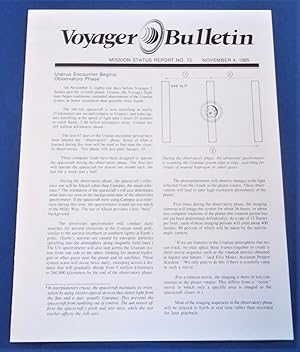
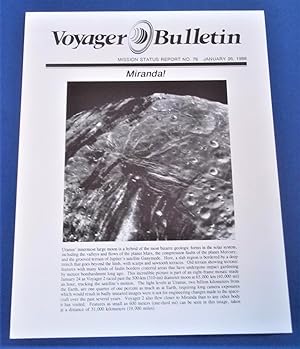
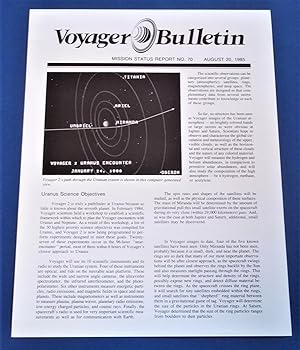
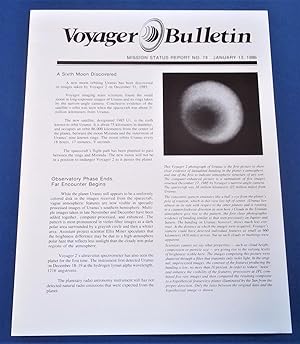
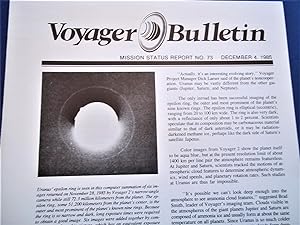
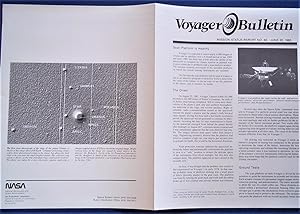
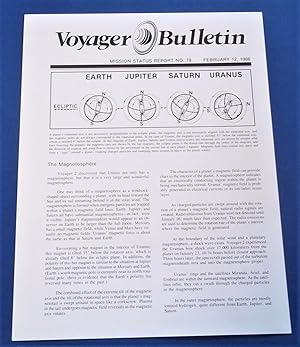
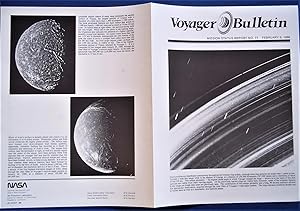
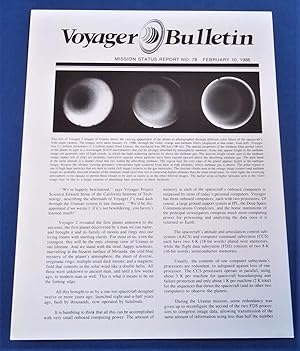

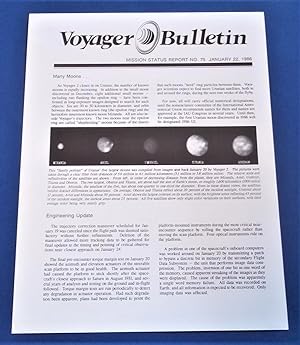

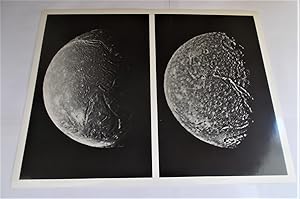
![Image du vendeur pour Ariel [Uranus] P-29523 January 27, 1986 (NASA - JPL Jet Propulation Laboratory - Photo - Voyager Mission) mis en vente par Bloomsbury Books](https://pictures.abebooks.com/inventory/md/md31508275030.jpg)
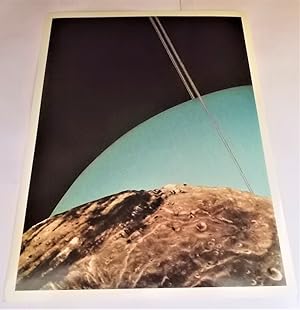
![Image du vendeur pour Miranda [Uranus] P-29541 January 28, 1986 (NASA - JPL Jet Propulation Laboratory - Photo - Voyager Mission) mis en vente par Bloomsbury Books](https://pictures.abebooks.com/inventory/md/md31508271173.jpg)
![Image du vendeur pour Miranda's Terrain [Uranus] P-29515 January 26, 1986 (NASA - JPL Jet Propulation Laboratory - Photo - Voyager Mission) mis en vente par Bloomsbury Books](https://pictures.abebooks.com/inventory/md/md31508271172.jpg)
